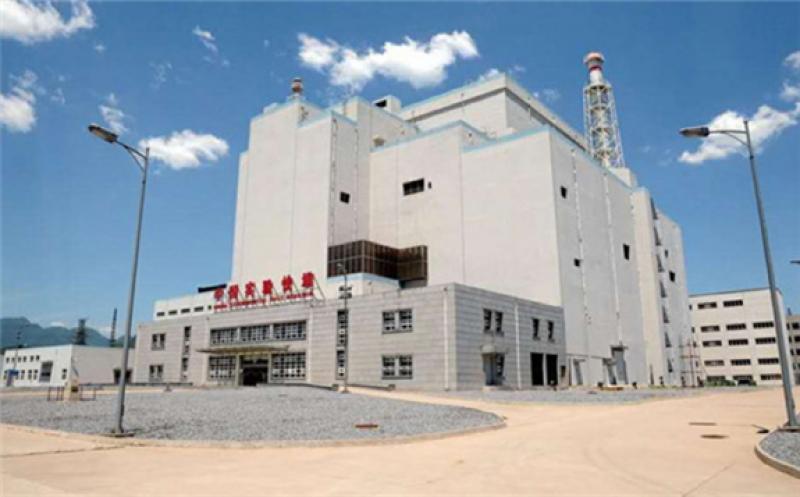The China Experimental Fast Reactor (CEFR) completed a manual emergency shutdown test from full power on 31 July, China National Nuclear Corporation (CNNC) announced last week. The company said this marked the end of commissioning tests for the power test phase of the reactor and verified that its performance met the design requirements under stable conditions and expected transient operating conditions.

CNNC said completion of the test also marks the successful completion of the first core cycle trial operation task of the CEFR, "laying a solid foundation for the subsequent commissioning phase to be transferred to the operations phase".
The sodium-cooled, pool-type fast reactor was constructed with Russian assistance at the China Institute of Atomic Energy (CIEA), near Beijing, which undertakes fundamental research on nuclear science and technology. The reactor has a thermal capacity of 65 MW and can produce 20 MW in electrical power. The CEFR was built by Russia's OKBM Afrikantov in collaboration with OKB Gidropress, NIKIET and the Kurchatov Institute.
First concrete for the CEFR was poured in May 2000 at CIAE's Beijing site. The reactor achieved first criticality in July 2010 and was connected to the grid at 40% capacity a year later. Since then, various commissioning tests on the reactor, the turbines and of the sodium pumping system have been carried out at increasing power output levels. Materials and fuel irradiation tests have also been conducted over this period. CEFR achieved its design goal of 72 hours at full power in 2014.
Following the earlier completion of low-power tests and nominal power tests, CEFR was restarted on 19 June for high-power operations. Over the subsequent 40 days of operation, a number of tests were completed, including a dynamic test of the steam turbine digital electro-hydraulic (DEH) control system, a 75% power turbine load rejection test and a cold start power-flow measurement test.
The reactor will now enter a refuelling and maintenance outage, after which operations will be restarted to carry out planned experimental research work.
Fast reactors offer the prospect of vastly more efficient use of uranium resources than in conventional power reactors, as well as the ability to burn actinides. Fast reactors have operated in various countries since the 1950s, with some producing electricity commercially.
China's fast reactor development has implemented a three-step strategy, namely going from an experimental fast reactor, to a demonstration fast reactor, to a commercial fast reactor. As China's first fast reactor, CNNC said the CEFR has "laid a solid foundation for the research and development of large-scale fast reactor power plants in China".
Based on the CEFR, a 600 MWe design - the CFR-600 - was developed by the CIEA. Construction of a demonstration unit in Xiapu County, in China's Fujian province began in December 2017. This will have a power output of 1500 MWt and 600 MWe. The reactor will use mixed-oxide (MOX) fuel with 100 GWd/t burnup, and will feature two coolant loops producing steam at 480°C. Later fuel will be metal with burnup of 100-120 GWd/t. The reactor will have active and passive shutdown systems and passive decay heat removal.
A commercial-scale unit - the CFR1000 - will have a capacity of 1000-1200 MWe. Subject to a decision to proceed, construction could start in December 2028, with operation from about 2034. That design will use metal fuel and 120-150 GWd/t burnup.